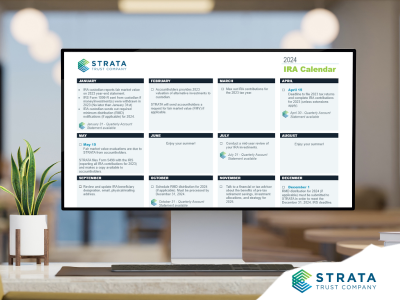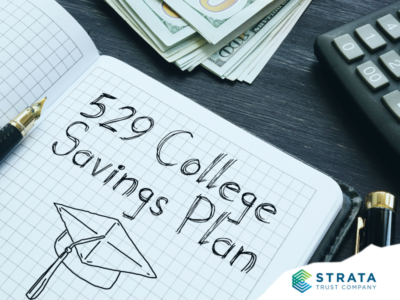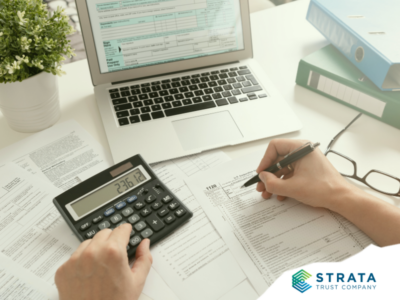In the spirit of April being Financial Literacy Month, it’s a great time to point out some of the details about your self-directed IRA (SDIRA) that you might not be aware of. Since 1974, the Employee Retirement Security Act (ERSA) enabled IRAs—and since 1975, investors have been able to self-direct them. Although they are a simple investment tool, they have complexities that offer additional value. Understanding all facets of an IRA can help investors maximize the power of tax-advantaged growth. Some of these facts may simply be interesting or surprising, while others may save you money or make your life a little easier.
1. Maintain More Than One IRA
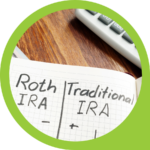 Most of us understand that it’s possible to have, for example, a Traditional IRA and a Roth IRA. But it’s also perfectly permissible to have multiple Traditional IRAs or multiple Roth IRAs. Of course, you cannot increase your contribution limits this way; you are still subject to one annual maximum amount no matter how many IRAs you have—but there may be beneficial reasons to have more than one IRA. For example, many investors leverage an SDIRA so they can better diversify their portfolio, invest outside of the stock market, and/or apply personal value investing to their retirement strategy—all while maintaining a traditional IRA established at a bank or brokerage firm with a guaranteed (although perhaps modest) return.
Most of us understand that it’s possible to have, for example, a Traditional IRA and a Roth IRA. But it’s also perfectly permissible to have multiple Traditional IRAs or multiple Roth IRAs. Of course, you cannot increase your contribution limits this way; you are still subject to one annual maximum amount no matter how many IRAs you have—but there may be beneficial reasons to have more than one IRA. For example, many investors leverage an SDIRA so they can better diversify their portfolio, invest outside of the stock market, and/or apply personal value investing to their retirement strategy—all while maintaining a traditional IRA established at a bank or brokerage firm with a guaranteed (although perhaps modest) return.
2. Children Are Allowed To Open IRAs

IRAs aren’t just for adults. Any child with documented earned income may also be eligible. Typically, the minor would have income documented on IRS Form W-2, say, from working part-time at a restaurant or a retail store. But working for cash—babysitting or mowing lawns—will not usually be considered eligible compensation because it’s not reported to the IRS in most cases. Assuming that the minor is eligible for an IRA contribution, most financial organizations will permit the minor to establish an IRA. They may, however, require a parent or guardian to sign the IRA plan agreement, depending on the minor’s age. Thanks to SECURE 2.0, 529 plan distributions can even be rolled over to a Roth IRA.
3. Make Spousal Contributions

Normally, you must generate earned income to contribute to an IRA. However, if you are married and filing a joint tax return, you may use your spouse’s income to contribute to your IRA. For instance, you may be retired but your spouse is still working. A spousal IRA contribution can be made either to your Traditional or Roth IRA, assuming that you are otherwise eligible. This contribution is still made to your IRA even though your spouse’s earned income is used to fund it.
4. Combine RMDs for Multiple IRAs
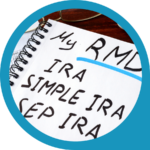
Once you have reached the age at which you must take required minimum distributions (RMDs), you can get a bit creative with how you take your RMDs. Specifically, the IRS lets you aggregate the separate RMDs from multiple IRAs and take them from one IRA—or any combination of IRAs. The main requirement is that you take the full RMD for the year. This rule may provide an opportunity to, for example, leave your SDIRA untouched while taking your total RMD amount from an IRA with more liquid assets.
5. Move Your IRA Assets
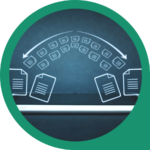
The IRS rules for moving your IRA assets are relatively simple: You can move assets from one IRA to another IRA of the same type through either a transfer or rollover. Transfers are not reported to the IRS, and there is no limit to the number of such transactions. Rollovers are reported as distributions (on the front end) and as rollover contributions (when the assets are put back into an IRA). So those rolling over assets must report the transaction on their federal tax return, even though the transaction does not result in tax liability. In addition, rollovers must be completed within 60 days of the distribution and can be done only once per individual in a 12-month period. If all you want to do is move assets from one IRA to another, the simplest way is usually through a transfer. In other situations, such as needing to use the money for up to 60 days, a rollover may suit your needs.
6. Broad Investment Options
 Many “traditional” financial institutions allow one type of IRA investment: a Certificate of Deposit (CD), while other organizations may allow a variety of mutual fund investments. But to gain access to a fuller array of investment choices, a self-directed IRA may fit the bill. With an SDIRA, you may have access to individual securities, real estate, promissory notes, private companies, and a host of other investments. These alternatives are not without risk, but the upside can be substantial, especially in the Roth IRA context. And remember that, while SDIRAs allow a broad range of investments, they are also subject to important IRS requirements.
Many “traditional” financial institutions allow one type of IRA investment: a Certificate of Deposit (CD), while other organizations may allow a variety of mutual fund investments. But to gain access to a fuller array of investment choices, a self-directed IRA may fit the bill. With an SDIRA, you may have access to individual securities, real estate, promissory notes, private companies, and a host of other investments. These alternatives are not without risk, but the upside can be substantial, especially in the Roth IRA context. And remember that, while SDIRAs allow a broad range of investments, they are also subject to important IRS requirements.
7. Beneficiary Options Have Changed
 “New” proposed regulations on RMDs and beneficiary options have been in place for over two years now—and while we are hoping for final regulations soon, the proposed regulations are currently effective. They contain numerous new provisions, including a new 10-year rule for most non-spouse beneficiaries who are more than 10 years younger than the deceased IRA owner. There are also new rules for disabled and chronically ill beneficiaries and certain kinds of trusts. Without detailing the many changes here, let’s focus on one key takeaway: if you haven’t done this recently, you should review your IRA beneficiary designations to determine whether they are still suited to your circumstances and the new regulations. These important designations are not a one-time, “set it and forget it” task—they should be an ongoing consideration in your total long-term financial wellness plan.
“New” proposed regulations on RMDs and beneficiary options have been in place for over two years now—and while we are hoping for final regulations soon, the proposed regulations are currently effective. They contain numerous new provisions, including a new 10-year rule for most non-spouse beneficiaries who are more than 10 years younger than the deceased IRA owner. There are also new rules for disabled and chronically ill beneficiaries and certain kinds of trusts. Without detailing the many changes here, let’s focus on one key takeaway: if you haven’t done this recently, you should review your IRA beneficiary designations to determine whether they are still suited to your circumstances and the new regulations. These important designations are not a one-time, “set it and forget it” task—they should be an ongoing consideration in your total long-term financial wellness plan.
Additional Information
Besides being a vessel for consolidating retirement savings and allowing tax-deferred investment growth, SDIRAs can offer investors the freedom to choose from an almost unlimited array of investment options. The seven little-known, but very powerful facts about IRAs just scratch the surface of how versatile they are. Although STRATA does not give any tax, legal, or accounting advice, our SDIRA experts can help you understand the concepts discussed above—contact us for any needed clarification so that you can be prepared to take the next step to maximize the benefits of your SDIRA.

